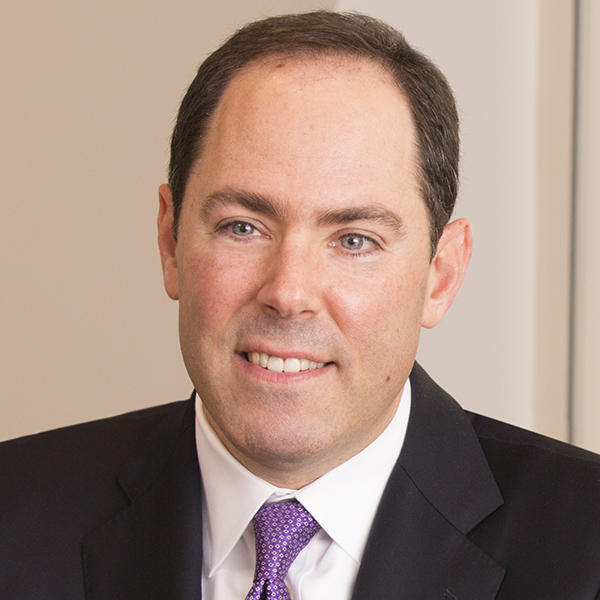債券
Capital IdeasTM
Investment insights from Capital Group
配当
Meta’s dividend initiation this year appears to have changed the payout paradigm for Big Tech companies. Soon after, Alphabet and Salesforce followed suit, announcing dividends for the first time.
Investors have historically balked at dividends as a sign of declining growth prospects. That was the signal that investors gave when Microsoft first announced its dividend in 2003. But Meta appears to have successfully changed that narrative. The stock went up 23% following the announcement, accruing almost $200 billion in market cap.
The distinguishing feature today is that the larger cap tech companies have buttressed balance sheets, strong earnings, reasonable valuations and what may be the beginning of an AI mega cycle that will require massive amounts of capital expenditure. In this context, the introduction of dividends by both Meta and Alphabet is viewed as a sign of capital discipline and confidence in earnings sustainability.
Big Tech’s foray into dividends
Meta and Alphabet will still spend billions on AI infrastructure. Dividends come after aggressive cost cutting and realignment of resources for many large tech companies. Along with Salesforce’s first-ever dividend of 40 cents per share, total dividend payments from the companies will amount to about $4.2 billion dollars on a quarterly basis.
Tech’s share of dividends is growing

Sources: FactSet, Capital Group. Data from 1999 to 2023.
While dividend-focused investors may not be thrilled given Meta's low dividend of 50 cents per share, and a dividend yield of 0.4%, in addition to Alphabet’s annual dividend of 80 cents and yield of 0.5%, the sheer scale shows substantial payments: $5.1 billion in for Meta and $10 billion for Alphabet. And the dividends will likely grow over time, as has been the case with other tech firms. Microsoft's dividend has consistently increased since 2003. Apple initiated its dividend in 2012 and has raised its quarterly payout for 12 straight years.
Tech firms have traditionally leaned on share buybacks and these will continue to be a core part of their overall capital allocation framework. For example, Apple recently announced a record plan to buyback $110 billion of stock, while Meta authorised a buyback of $50 billion. But an increasing number of tech firms are recognising that dividends can prove management’s commitment to shareholder returns. Companies are loath to cut their dividends as it sends a negative signal to investors and often leads to a decline in share price. Furthermore, the dividend is a way the technology giants can potentially grow their investor base beyond growth-oriented investors diversifying their shareholder base.
As tech firms have grown in market cap, the information technology sector has become a bigger part of the overall dividend equation for US stocks. Technology companies ranked as the second-largest contributors to S&P 500 dividends behind the financial sector and traditional dividend-paying areas of the market, such as health care and consumer staples.
Notably, 37 of the 65 technology companies in the S&P 500 Index pay a dividend. That’s more than half, which also means that there is room for tech companies to grow dividends further. Five of the Magnificent Seven stocks now pay dividends.
Looking beyond tech firms, dividends are growing across industries
Given rising cash flows and expectations of earnings growth for US equities, the outlook for dividend payers is brightening. The S&P 500 is expected to post a 6% increase in payments for 2024, compared to its 5% increase in 2023, according to S&P Dow Jones Indices data.
The dividend futures pricing curve is also significant as market expectations have increased following Meta and Alphabet’s announcements. The slope of the curve has steepened and can be used to represent expected dividend growth overtime, in this case, for the current year.
Tech brightens outlook for S&P 500 dividends

Capital Group, Bloomberg. Data includes trailing 12-months, 1-year forward, two-year forward, and 3-year forward dividend futures prices as of 30 April, 2024.
Dividends are being initiated and restored in many industries. As free cash flows rise on corporate balance sheets, many companies are increasing their payouts or reinstating dividends. Aerospace, airlines and cruise companies were among industries that conserved cash during the COVID-19 travel slump and are now shifting gears as global travel rebounds.
Ryanair, for example, announced its first-ever dividend in 2023 after a rebound in profit and a brighter forecast. Booking.com also initiated a dividend when the company cited earnings and free cash flow strength. Delta Air Lines reinstated its dividend after suspending it during the pandemic. General Electric, which makes and services jet engines, recently boosted its dividend.
Dividends are growing globally. European banks Santander, Deutsche Bank, UniCredit and BNP Paribas have also elected to raise dividends in 2024.
Global dividends are expected to grow

Source: FactSet. Data from 2013 to 2023, with 2024 through 2026 based on consensus estimates as of 24 April, 2024. CAGR = compound annualised growth rate.
Energy giants such as ExxonMobil and Canadian Natural Resources have maintained a steady base of investors amid volatile oil prices by maintaining and growing their dividend for over 20 years. Some exploration & production companies have opted to incorporate variable or special dividends in addition to their base payouts as they manage cash flow levels given fluctuations in commodity prices.
Bottom line
Dividends benefit management in several ways. First, they can widen a company’s shareholder base. Having more investors can reduce stock volatility by accommodating growth and dividend income investors. Second, many employees at technology and innovative companies receive company stock as compensation. Consequently, a dividend can be seen as an indirect pay raise and boost employee morale.
Over the past 12 months, we have seen signs that the US equity market has broadened beyond a highly concentrated group of stocks, and traditional dividend payers have been getting more interest. Dividend stocks are demonstrating better earnings growth and can ride out market volatility along with elevated interest rates.
It’s possible that dividend-paying companies may see a valuation re-rating. The P/E ratio of high dividend stocks versus the S&P 500 has lagged, though the ratio is gradually improving.
Dividend payers present opportunities

Source: Goldman Sachs. Data as of 31 March, 2024. P/E ratio = price-to-earnings ratio. Past results are not predictive of results in future periods. This chart examines the P/E multiple of the cohort of stocks in the S&P 500 Index with the highest quintile dividend yield (sector-neutral) relative to the broader S&P 500.
If the Federal Reserve eventually cuts interest rates, this could also be a catalyst for higher yielding dividend stocks. While a large portion of the nearly $6 trillion in cash sitting on the sidelines may move to fixed income, declining interest rates coupled with a more resilient economic environment could also increase investor demand for these stocks.
RELATED INSIGHTS
-
Five factors to watch in multi-sector credit
-
米国株式
Beyond Consensus: Economic Perspectives for 2025 -
株式
The road ahead for equities
過去の実績は将来の成果を保証するものではありません。投資の価値および投資収益は減少することも増加することもあり、当初投資額の一部または全部を失うことがあります。本情報は投資、税務もしくはその他の助言の提供、または証券の売買の勧誘を意図するものではありません。
個人に帰属する記述は、その個人の出版日現在の意見を述べたものであり、必ずしもキャピタル・グループまたはその関連会社の意見を反映したものではありません。特に明記がない限り、すべての情報は記載された日付現在のものです。一部の情報は第三者から取得したものであり、そのため、かかる情報の信頼性については保証いたしません。
 Chris Buchbinder
Chris Buchbinder
 Marc Nabi
Marc Nabi
 Anne-Marie Peterson
Anne-Marie Peterson